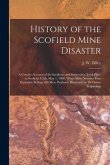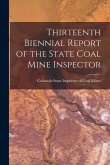The first discovery of uranium in Saskatchewan was at Nicholson Bay, in a remote northern location on the shore of Lake Athabasca. Uranium was first noted at what became the Nicholson site in 1929 when uranium was only of interest as an indicator of radium potential. When uranium ores became of strategic national interest in about 1940, a cross-Canada search was launched to find uranium deposits. The first to be found and developed was in the Northwest Territories. The second arose from a return to exploration at the Nicholson site in the Beaverlodge area in 1944. The Nicholson mine was the first uranium mine to be developed in Saskatchewan and, in 1949 was the only active uranium mine in Canada outside of the Northwest Territories. By 1959 the Nicholson ore body had been essentially depleted, but the Nicholson mine had played its role in helping Canada become one of the largest uranium producers in the world. It produced about 12,800 tonnes of uranium ore, yielding about 50 tonnes of uranium (as U3O8), and an estimated 60- to 90 thousand m3 of waste rock. Following closure in 1960, the Nicholson site was abandoned with little remediation and no reclamation being done. Forty-five years would pass before the governments of Saskatchewan and Canada reached an agreement to fund the remediation (clean-up) of the Nicholson site, and contracted the management of the project to the Saskatchewan Research Council (SRC). At the time of writing this book the clean-up was about to begin, with several years of clean-up activity anticipated, and then a period subsequent monitoring activity, before the site is expected to be released into a long-term management and monitoring program.
Hinweis: Dieser Artikel kann nur an eine deutsche Lieferadresse ausgeliefert werden.
Hinweis: Dieser Artikel kann nur an eine deutsche Lieferadresse ausgeliefert werden.




![Report on the Albert Coal Mine [microform]: Containing an Account of the Situation and Geological Relations of the Rocks, Including and Accompanying t Report on the Albert Coal Mine [microform]: Containing an Account of the Situation and Geological Relations of the Rocks, Including and Accompanying t](https://bilder.buecher.de/produkte/66/66134/66134542m.jpg)


![The Ingraham Coal Mine at the North Bar, Sydney Harbor, Cape Breton [microform]: Containing by Computation 18.402.500 Tons The Ingraham Coal Mine at the North Bar, Sydney Harbor, Cape Breton [microform]: Containing by Computation 18.402.500 Tons](https://bilder.buecher.de/produkte/66/66118/66118881m.jpg)
![The Sampling and Estimation of Ore in a Mine [microform] The Sampling and Estimation of Ore in a Mine [microform]](https://bilder.buecher.de/produkte/66/66196/66196763m.jpg)